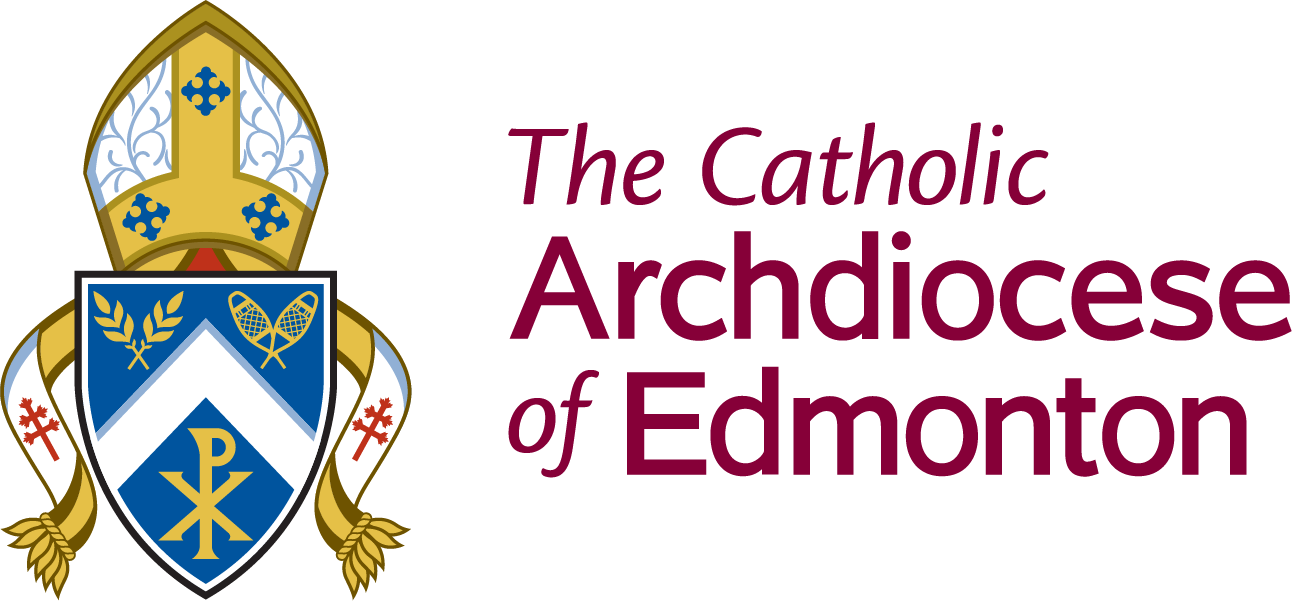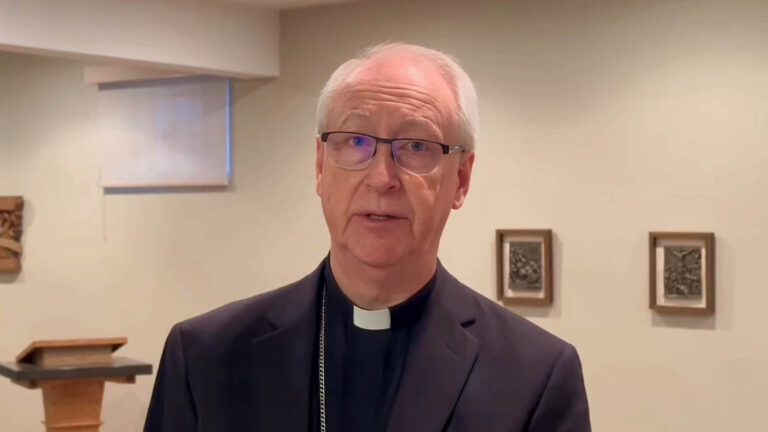Twenty-Ninth Sunday in Ordinary Time – Year B
Mass for the Saint Luke Physicians Guild
Homily
[Isaiah 53:10-11; Psalm 33; Hebrews 4:14-16; Mark 10:35-45]
As you know, we recently launched our pastoral priorities for the Archdiocese. Focused upon formation in the faith, they will unfold under the patronage of the Blessed Mother. The perfect disciple, Mary teaches us how to live as followers of her son through a life marked by worship, witness, and service. Given that we find ourselves today at this particular Archdiocesan moment of turning to Our Lady for her prayer and guidance, I’d like to explore with you in this homily what Mary teaches us as members of the Saint Luke’s Guild. To do this, let’s begin by reflecting on the relationship between our patron and the Blessed Mother, and then ask how that speaks to us.
Recently, I came across a rather striking way of speaking of Luke in relation to Mary. It is from St. Lawrence of Brindisi, a Capuchin friar of the sixteenth century and doctor of the Church.[1] He refers to Luke as “Mary’s secretary”. Behind this is the fact that only in the Gospel of Saint Luke do we have the beautiful infancy narratives pertaining to the Annunciation by Gabriel to Mary, the Visitation by Mary to Elizabeth, the Nativity of Jesus, the presentation of the divine newborn to Simeon and the finding of the young Jesus in the Temple. From where did Luke get those accounts? Lawrence suggests it could only have been from Mary, because only she was personally involved in all of them, and thus the unique eyewitness to those wondrous events. Hence, “Mary’s secretary”. It is speculation, of course, but entirely plausible. What Luke would have learned from Mary he recorded as an essential part of the Gospel bearing his name.
Luke exercised this “secretarial role”, registering on paper what he learned from Mary, in his vocation as an evangelist. But tradition tells us he was also a physician. This raises a question for members of the Saint Luke’s Guild: in what way are we called, in our medical vocations, to be “Mary’s secretary”? What can we, as Catholic healthcare professionals, learn from the mother of our Lord and register as a constitutive dimension of our clinical practice?
For the answer, let’s turn to the Gospel passage from St. Mark. It follows immediately upon the Lord’s prediction of the suffering and death he would endure as Messiah, of what he would go through as the fulfillment of the Suffering Servant prophecy recorded in Isaiah. In a rather tactless and out-of-tune manner, James and John ask the Lord about their prospects for advancement, wondering if they might be granted the top positions in what they imagine to be Jesus’s future kingdom. In reply, Jesus asks them this: “Are you able to drink the cup that I drink, or be baptized with the baptism that I am baptized with?” Here, “cup” refers metaphorically to God’s plan for a person. Jesus is to drink the cup of suffering, and those who would follow him must be prepared to do the same. Here we have the scriptural basis for what the Church would later speak of as redemptive suffering, namely, the uniting of our own suffering with that of Jesus, drinking his “cup” so that he would render the pain we experience effective for the salvation of the world.
James and John, together with other apostles, eventually did drink the cup of the Lord in the martyrdom they endured for the Gospel. Mary also drank that same cup, drawing from it more deeply, in fact, than anyone else. Simeon’s prophecy of a sword piercing her heart was realized as she stood at the foot of the Cross, the mother enduring with pain beyond words the agony of watching her son die by crucifixion.
Here, on this point of suffering, is where I suggest that members of the guild can most beneficially understand themselves as Mary’s secretaries. The reality of human suffering is woven into the very fabric of your work in healthcare. You confront it daily and strive after its alleviation. You also have to deal with your own personal vicarious suffering. I have learned from many people in healthcare how difficult and painful it is to enter into the suffering of another and inevitably take some of that into yourselves, try as one might to create a separation. What does Mary teach us? What from her might we learn and “record” in our lives?
As it likely was for Luke, it certainly is for us – Mary is a unique eyewitness to the power and love of God working in and through human suffering: that of her son, first of all, but also her own. Her eyewitness is unique in the sense that she, as the Lord’s mother, was more closely united with Jesus than anyone in his mission of redemption through suffering. Her example speaks to us as no one else can of the joy and hope that follow upon the decision in faith to offer our suffering to God by uniting it with that of Jesus. As her secretaries, we write this into our clinical practice by bringing the suffering and pain of our patients, as well as our own, to the Lord and asking him to carry it to the Father and make it redemptive – the ultimate “remedy” – for those entrusted to our care and for the whole world.
The redemption wrought by the suffering and death of Jesus is rendered present on the altar in every celebration of the mass. As we receive from the Eucharist the grace of union with Jesus in his death and resurrection, let us bring to him the suffering of every sick person for whom we are caring, as well as our own grief and sorrow, and ask the Lord for healing, yes, but also to lead us all by his mercy through the pain to the wonder and joy of salvation.
Most Reverend Richard W. Smith
Providence Renewal Centre, Edmonton
October 20th, 2024
[1] Magnificat, Meditation of the Day, October 18th, 2024.


